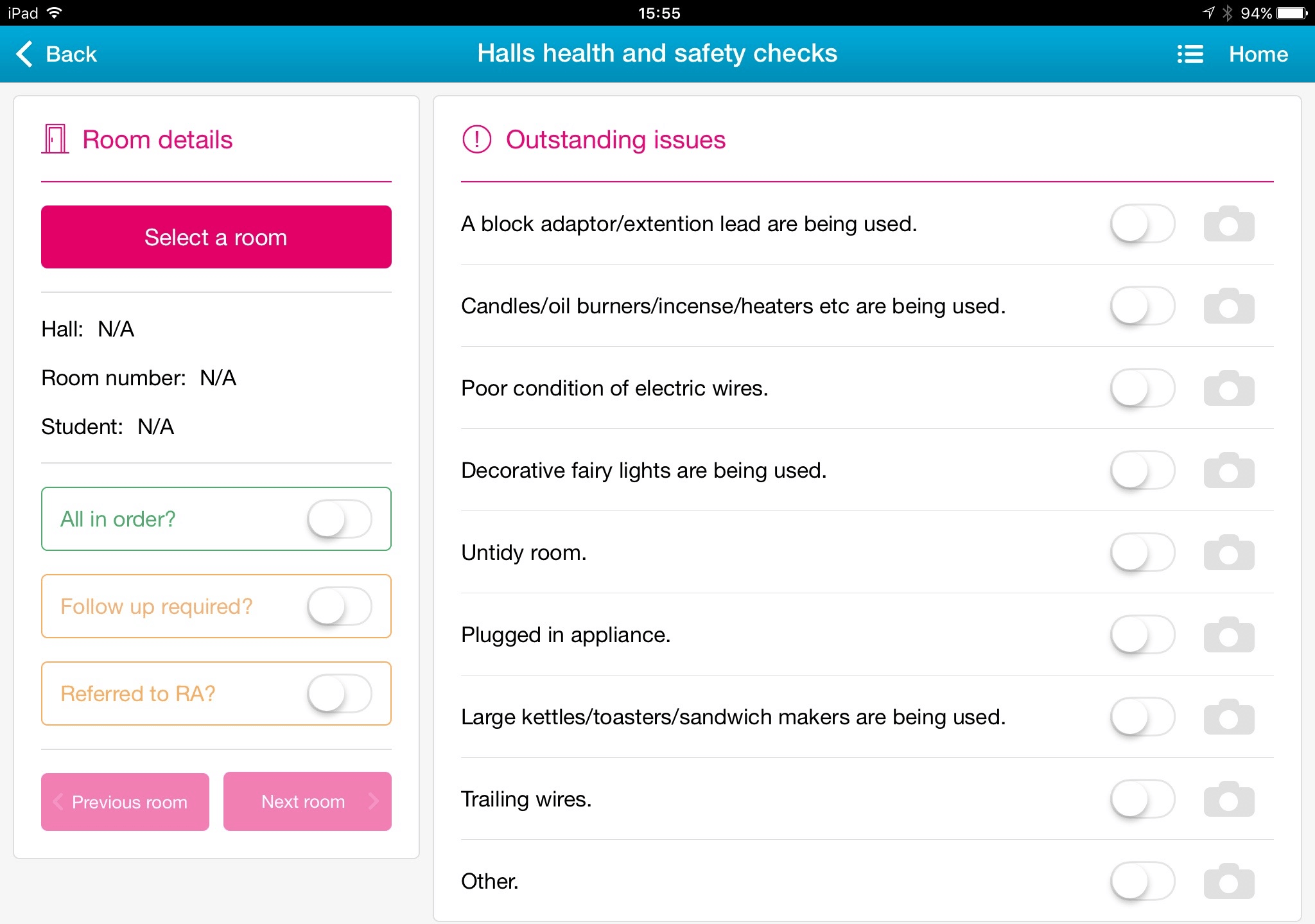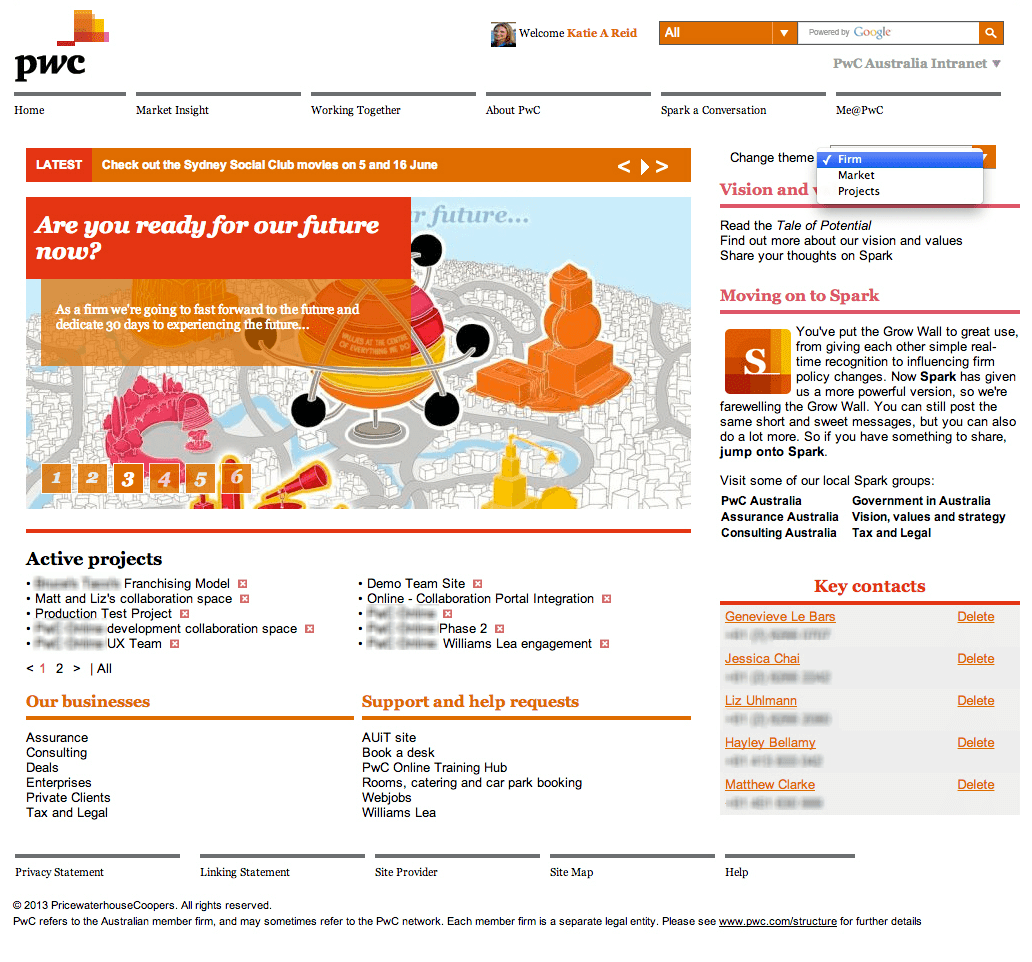
Filed under: Digital workplace, Intranets, Latest Features
A great digital workplace needs to deliver an engaging employee experience. Organisations already prioritise the customer experience, and digital workplace teams must make the employee experience as high a priority. By making this the focus, teams can reshape the way employees work and even have a positive impact on the bottom line.
There are five key approaches teams should take to improve the employee experience:
- target high value areas of the workforce
- take a data-driven approach
- establish an employee experience ‘tiger team’
- deliver solutions, not just designs
- align employee experience with customer experience
Many savvy digital workplace teams and well-managed projects are already actively following these approaches.
Here’s some inspiring examples from leading digital workplaces:
Targeting value at Anthony Veder

A wireframe for Anthony Veder’s dashboard for managing vessels. Anything that is included must drive efficiency and value. Screenshot appears courtesy of Anthony Veder Group.
A key approach for delivering a great employee experience is to focus on areas of high value that will impact the way employees work.
Anthony Veder Group is a Dutch shipping company which manages a global fleet of gas tankers. Prior to the introduction of the company’s dashboard solution, The Bridge, the company still relied on inefficient, paper-based processes to carry out its core processes for managing ships.
As part of an organisational change program called “Work Smarter”, an online dashboard has been introduced which has revolutionised the company’s fleet management process. Employees can now see all the data they need to manage vessels.
Data comes from a variety of different systems, both on-premises and in the cloud, and is displayed on one screen and in real time. Additional dashboards have been created for specific departmental needs.
Overall the initiative has contributed to substantial time savings per employee per day. Part of the reason The Bridge has had such a significant impact is that the team targeted a high profile and high value process within the company where there were obvious benefits to delivering a digital solution.
The team has also ensured value by insisting that during the design and scoping phase, any data that is included on the dashboard must drive efficiency. If it doesn’t, then the data cannot go on the dashboard.
Obtain the full case study of Anthony Veder’s dashboard solution.
Taking a data-driven approach at Prestige Financial

Prestige Financial’s intranet shows extensive information about dealerships, helping save time for sales and marketing staff. Screenshot appears courtesy of Prestige Financial.
Just as their colleagues in customer experience teams do, those building the digital workplace need to use data to inform their solution designs.
Prestige Financial is a US-based provider of financing solutions to automobile dealerships. Previously sales staff had to go into up to seven different systems to either update or access all the information they needed to carry out their activities.
A new intranet, called Driveline, integrates critical information about the dealerships with the intranet’s search facility, as well as related information about loan applications, related contacts and other documents. As the intranet is mobile-enabled, sales staff on the road can also access critical information far more easily.
By taking a data-driven approach and pinpointing the needs of sales staff and how they actually work, the team behind Driveline have delivered an intranet that is closer to a digital workplace environment, and which slashes the time taken to carry out core activities.
Previously it took staff 12 minutes to find all the details about one customer account. This now takes 30 seconds. Altogether, the company has calculated that the intranet has saved $15,000 per marketing representative per year, allowing more time to be spent working with customers.
Obtain the full case study of Prestige Financial’s data-driven intranet.
Establishing a “tiger team” at LV=

The combined intranet team at LV= has a wide set of skills and responsibilities, enabling them to deliver a successful platform. Screenshot appears courtesy of LV=.
Any team focusing on the employee experience needs to encompass a range of skills and disciplines. In many organisations this may mean combining teams or working with external providers.
UK financial services company LV= has a completely custom-built digital workplace based on open source technologies. The digital workplace includes intranet publishing, a social network, digital signage, Twitter style updates, a number of apps, an ideation platform, a social Q&A facility, communities and more, all of which are integrated into a cohesive ecosystem. The platform receives very high levels of adoption.
LV=’s solution has been wholly produced in-house. Being self-sufficient has allowed the team behind it to be highly agile, flexible and responsive in quickly deploying solutions and making changes which fit tightly into the way employees work and aligns with LV=’s culture.
One of the reasons for LV=’s success is the “tiger team” approach of having a full service set of skills among the individuals involved in delivering solutions, allowing them to be completely self-sufficient.
Although the wider team is actually made up of two (Digital Internal Communications and the Fast Track team) and sit across HR and IT, there is a common mission and sense of purpose, and they work very closely together.
Other “tiger teams”, such as as the HR innovation team at Australian telecommunications giant Telstra, follow a similar approach but instead work more with selected external providers.
Obtain the full case study of LV=’s custom-built digital workplace.
Delivering true solutions at the University of Liverpool

The mobile development team at the University of Liverpool always delivers mobile solutions that meet well-defined needs, for example to help the inspectors of student accommodation. Screenshot appears courtesy of the University of Liverpool.
When teams do focus on the employee experience they need to be delivering solutions to actual work problems which go beyond just designing interfaces.
The University of Liverpool is one of the UK’s top academic institutions. The in-house mobile development team has produced a number of different mobile apps to help both students and staff carry out processes and complete tasks.
The team combines strong design and development skills that are always ruthlessly focused on the task at hand. Every app is built to solve a particular problem, avoiding any unnecessary bells and whistles. The team works very closely with their internal clients to fashion a solution which will have a genuine impact.
For example, staff inspecting the halls of residence (student accommodation) for safety checks and other related processes previously had to document this manually with a clipboard. The mobile development team built an iPad-based app to record the results of the inspections, slashing the time for inspecting one major hall of residence from three weeks to three days.
A strong solutions-oriented approach also produced a better result for students, where communication is now automated. For example, students can now see an actual photo of anything they have brought into their room that was unsafe.
Read more about University of Liverpool’s mobile solutions.
Aligning employee to customer experience at PwC Australia

PwC Australia’s intranet homepage closely follows the external brand, and the intranet was built as part of a wider environment incorporating client extranets and the corporate website. Screenshot appears courtesy of PwC Australia.
An employee experience team that works closely with its customer experience team can:
- leverage best practices and learn from a wider set of skilled colleagues
- focus on end-to-end processes which align internal workings to customer touch-points
- deliver environments with identical corporate branding.
When PwC Australia developed its intranet, unusually, it was conceived around a vision of a single online environment for both internal and external use, with access provided for clients. Even though clients cannot access the intranet, personas of staff and clients were used to help develop the intranet design.
The result is that the intranet is sharply focused on internal activities which will drive better client service and is therefore closely aligned to the way people work. The intranet also has branding which closely follows the experience on the external website.
Obtain the full case study of PwC Australia’s intranet project.
It’s all about the experience
Concentrating on the employee experience must be a focus for the digital workplace and the teams behind it. It’s likely that you already apply some of the approaches above to your intranet, but perhaps not to the wider set of digital applications used by employees.
It’s important that organisations follow the same principles that they already follow to drive an excellent customer experience. Evolving and nurturing a powerful employee experience focused on value will help to develop a digital workplace environment your staff truly appreciate and want to use.





